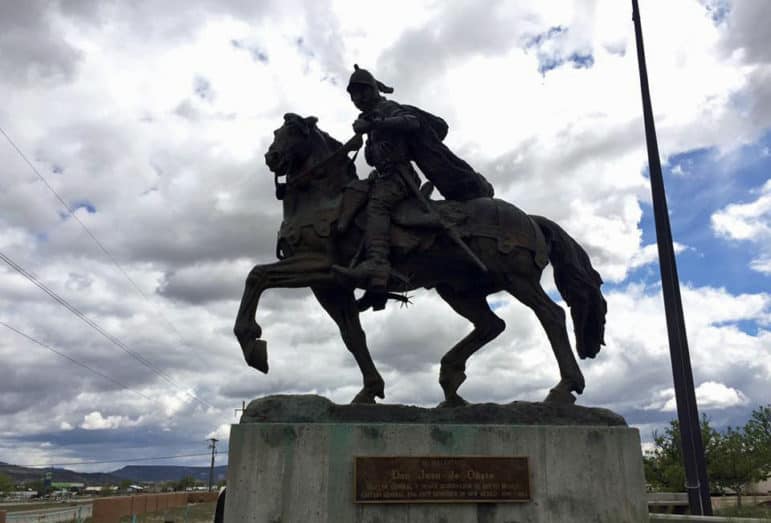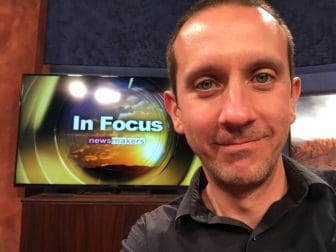
Heath Haussamen / NMPolitics.net
A statue of Don Juan de Oñate in Rio Arriba County.
COMMENTARY: I was taught as a child growing up in Santa Fe that the Spanish reconquest of my hometown 12 years after the 1680 Pueblo revolt was peaceful.
Not until college did I begin to understand the complex truth of colonization that hid underneath that superficial falsehood. And it wasn’t until a few years ago, when I discovered that my Montes-Vigil ancestors were sent from Zacatecas in 1694 to help reinforce the Spanish presence around Santa Fe, that I realized I’d been robbed for much of my life of the ability to grapple with a painful truth about my ancestors.
That truth is that the Spanish invaded this land in 1598 when Don Juan de Oñate proclaimed that it belonged to Spain, and our Spanish ancestors, like the Americans after them, committed brutal atrocities against Native people.
Oñate’s army, for example, slaughtered hundreds of people in 1599. We enslaved Natives. We built Catholic churches on top of their pueblos and forced conversions. My ancestors stole crops from Natives during a bad winter. I’m certain people starved to death.

Heath Haussamen
And the colonizers, led by Don Diego de Vargas, entered Santa Fe in 1692 with a formal declaration that Spain was retaking the land and a promise of clemency for those who returned to Christianity. There may have been no bloodshed that day, but there was later fighting at some pueblos. Native men were killed. Women and children were enslaved.
The effects linger. The Navajo Nation’s poverty rate is more than twice the state’s. New Mexico’s Native youth are more than twice as likely as others to die by suicide. Native people are more likely to be killed by police than any other group in the United States.
So as protests of Spanish colonization celebrations have raised awareness and increased tension in recent years, it’s encouraging to see bold steps toward reconciliation.
Española’s city government opted this year to stop funding and overseeing an annual celebration of Oñate’s arrival. And Santa Feans have agreed to end the annual Entrada celebration – a re-enactment of the false narrative about de Vargas’ 1692 reconquest that has long been part of the annual Fiesta de Santa Fe.
We shouldn’t erase our history. But rather than celebrating our bloodiest moments, we need to accurately portray and teach them. Memorials and events should promote understanding and encourage racial reconciliation.
The massive, in-your-face sculpture of Oñate at the El Paso International Airport should come down. Cities like Las Cruces should evaluate their monuments to Spanish conquest. Do they inaccurately portray what happened? Do they glorify it? If so, they need to be changed.
Officials should rename schools that are named after Oñate in Las Cruces, Albuquerque and Gallup. Santa Fe is again leading on this issue by replacing De Vargas Middle School with a facility bearing a different name.
Santa Fe Mayor Alan Webber says the city is starting a new chapter with the end of the Entrada celebration, creating “new opportunities for events and programs that reflect our city’s unique history, culture and sense of community.”
“At this difficult and divided moment in our country, too many communities are choosing a different path, embracing anger, rancor, racism and hate,” Webber said. “Here in Santa Fe were are choosing peace, reconciliation, respect and unity.”
Facing our history and then changing can be really difficult. I’m proud of my hometown. I’m grateful that in 2018 the city’s children will grow up with a deeper understanding of their heritage than I did.
Other communities should follow Santa Fe’s lead.
Heath Haussamen is NMPolitics.net’s editor and publisher. Agree with his opinion? Disagree? NMPolitics.net welcomes your views. Learn about submitting your own commentary here.